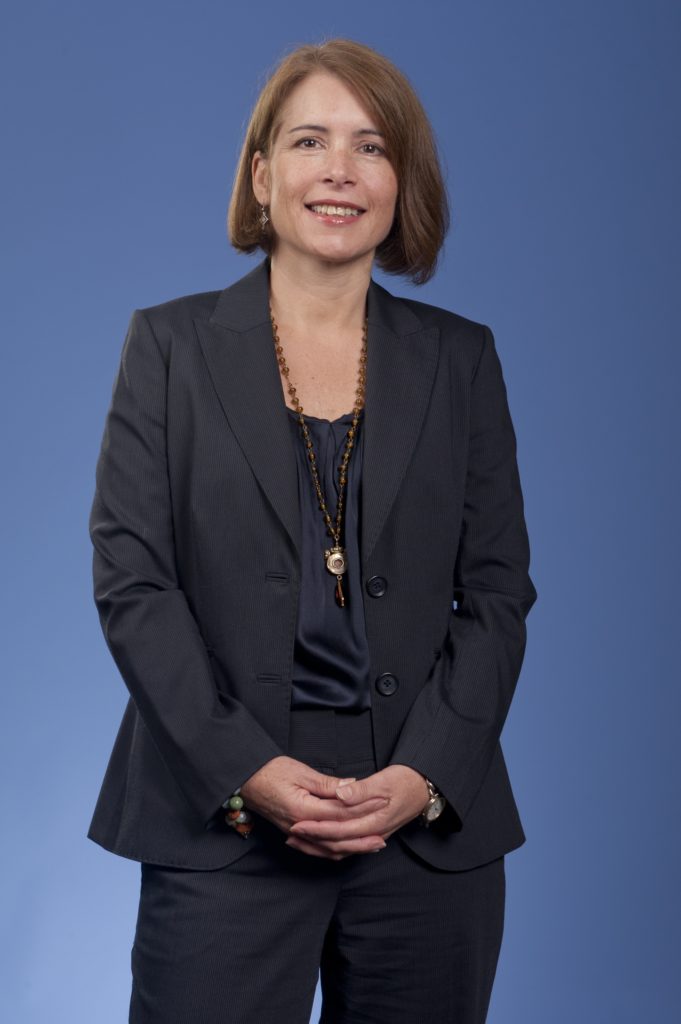The communication professionals
Rhys Kelly is the Head of Communications at The Smith Family. Kelly has over 20 years’ experience in sales and marketing, predominately within the film and television industry locally and internationally in both the for-profit and not-for-profit (NFP) sector.
Justine Flynn is the Co-founder and Director of Marketing and People at Thankyou Group. After winning the national Australian Business Week Competition while still at school, Flynn continued to develop her interest in business, which led her to establish the innovative social enterprise.
Kirsten Pilatti is the National Sponsorship and Communications Manager at Breast Cancer Network Australia (BCNA). Pilatti’s previous roles include Communications Director at the Cancer Council Victoria and Marketing Manager at Netball Western Australia.
What does a NFP organisation need to consider when developing a marketing and communications strategy?
Kelly: The starting point is to be clear about what is meant by strategy. It’s a word that’s used a lot and interpreted in different ways. I’ve actively sought to understand where strategy sits in our communications work and how to apply it to what we do.
For me strategy is about the art of winning. Strategy is the connection and interplay between a series of elements that, when drawn together, become a cohesive whole which drives a result.
All good strategic planning begins with objectives. How can you know that you will achieve your goal if you haven’t defined what it is from the get-go?
When approaching communications activity at The Smith Family, as would be expected budgets are not limitless. Every dollar spent has to be one that generates an effective return. To do this effectively we define our objectives and integrate them into our communications and marketing plan.
Flynn: One of the most important things to consider is whether there will be enough return on investment (ROI) for a chosen tactic. While ROI can sometimes be difficult to measure in marketing and communications, it’s crucial to be discerning with where the investment is going in order to get as much return as possible, especially because budgets are usually quite limited in NFP organisations. We’ve found that it takes a lot of deliberate strategic planning to determine how to best use our small budgets to make the biggest impact possible when communicating with our target market.
Pilatti: It’s very important for a NFP to clearly define its vision and mission to ensure that its marketing and communications strategy clearly articulates this to stakeholders. This is not just in words but in images, partnerships and policies.
When looking at your strategy it’s important to understand how each stakeholder segment views your organisation. Then consider what you want them to know, say and feel about you. The strategy then becomes how you’re going to shift their current perception to the desired perception.
In your opinion, what is the most effective communication tool that NFPs can use to engage with their stakeholders?
Kelly: Knowing the value you offer from your supporters’ perspective and how to communicate that value in a meaningful way which resonates with them.
Using language that people connect with and that connect them to your cause is vital. Researching what you have done previously and reviewing results so that you can learn more about this will improve your future communication efforts.
Determining the right channel mix and using a simple model to ensure that your communication is relevant, at each of the different stages where audiences are in their journey with you, is key.
PR and social media are both incredibly powerful engagement tools. Both channels give NFPs the opportunity to tell the bigger story of the social change the organisation is trying to drive. Social media is a fantastic way to share stories, engage the community and keep the conversation alive to educate and drive the cause.
Flynn: When we first launched back in 2008, we were extremely limited in what we could do from a marketing and communications perspective because we had absolutely zero budget. One of the first things we did was start a Facebook page and Twitter account so we could begin to engage with our community, which was very small at that stage, to spread the Thankyou message. It proved to be an invaluable tool for us – it helped to build a rapport with our audience and really communicate the heart of Thankyou through the content we shared. Today, we would still say that social media – Facebook, Twitter and Instagram – are our most effective channels because it allows a direct engagement with our fans and allows us to keep the conversation going. Our customer service line now manages responses on social media just because we’ve found that it’s easier for customers to connect through their social media channels rather than picking up a phone or e-mailing.
Pilatti: The lift pitch is an old adage for marketers but it’s so true. You need to be able to articulate what you do in the same amount of time you would meeting a stranger in a lift. It’s important to be clear and precise in all your communications. Simple, short and sharp communication is essential for any successful organisation. People don’t have time to read long winded correspondence – images are a great alternative and a wonderful tool to convey a story.
At BCNA we find that the most effective way to communicate with our members, potential supporters or the media is to tell stories. With a network of 85,000 Australians, we have so many wonderful and powerful stories. Hearing directly from a woman about her individual breast cancer experience is much more powerful than an organisation telling you about an issue. Media coverage relies upon having a human face for an issue and we put a lot of work into sourcing powerful personal stories to demonstrate the impact breast cancer has on individuals, families and the community.
With so many communication platforms both on and offline, how can NFPs be sure that they’ve chosen the correct one?
Kelly: The only way to know for sure is to test and measure, measure and measure! Being able to track and measure channel performance is critical – it’s the only way to know if your activity is making a difference.
You can’t be everywhere your prospective and existing supporters are, but if you have knowledge about your supporters you can run a strategy in the most effective channels at the right time. Select platforms that have worked for you in the past and make sure your approach is integrated so that the messages you convey are aligned.
Trial new channels and new content options to engage supporters – our marketing team ensures every appeal is a learning tool as well as a successful campaign.
Flynn: This comes down to the organisation’s marketing and communications plan. The decision of what platforms to use is driven by who the target market is and what the marketing objectives are. Different platforms appeal to particular demographics. Essentially, you will know you have the right platform if the above align and you’re engaging with an audience in line with your marketing objectives. I also think it’s really important to not spread yourself too thin when it comes to marketing and communications channels. There are so many platforms out there, with new ones arriving at our fingertips constantly, that it’s tempting to want to use them all and have a presence everywhere. I’ve found that it works well to choose a couple of platforms that really align with your marketing objectives and then put your heart and soul into making those particular platforms work really well for you.
Pilatti: Know your stakeholders – including how, when and why they want to receive information. Most women being diagnosed with breast cancer are over the age of 50. The majority of BCNA members are over 60, so it’s essential that we provide communication platforms that work for this segment. To ensure we deliver to these members we complete regular research, which is balanced with a communication strategy for our general public supporters who are usually younger and eager to receive our information via electronic communications platforms.
For example, we know that the majority of our members still want to receive a hard copy of our quarterly newsletter in the post. But we also know that the 50 plus age group is the fastest growing on Facebook. So while our hard copy publications still form the cornerstone of our communications, we can supplement them with regular electronic direct mails and daily updates via our social media channels.
What is the most common mistake that NFPs make when communicating their message?
Kelly: You can’t be blinded by your own cause – look at your offer objectively and from the point of view of your supporter. The best way to do this is to ask them what they value, and what’s compelling for them. Keep asking because your organisation will evolve, so your messages have to too. The more you know about how your communications are being received by your supporters, the more effective your communications program will be.
Understand where your cause is in its life cycle and therefore what inherent value trust in brand is playing.
You must be authentic, credible and genuine and never underestimate the sophistication of your audience.
Flynn: From my experience, one of the most common mistakes is forgetting to keep the conversation two-way. Often, this results in companies using formal language that don’t appeal to their audience and giving off the vibe that they’re just trying to ‘sell’ information about their organisation. Consumers are extremely savvy when it comes to the way organisations communicate with them – social media is a great example of this. It’s understandable that customers don’t like to have their personal space invaded by brands that are only trying to sell them a product or service, for example, their Facebook newsfeeds being flooded with sponsored stories from brands. It’s been suggested that a consumer will engage 100 times more if they’re drawn in by a conversation that they can relate to. It’s because of this that we put a lot of time into brainstorming content for all our channels and making sure that what we’re talking about isn’t only interesting to us, but interesting to our audience.
Pilatti: Trying to be too many things to too many people. The development of electronic communication platforms has provided us with a fabulous opportunity to segment our communications. It’s no longer okay to have a one-size-fits-all approach to communications. Find out how your different audiences like to keep in touch with you. Determine your communications style. For example, your hard copy publications might be more formal but social media provides the right environment for a more relaxed, interactive way of communicating.
NFPs also need to be conscious of spreading themselves too thin. NFPs have to do more with fewer resources, so we need to be clever about it. Don’t bother with every social media channel out there, just the ones that work for your audience.
What are your top tips for creating a great marketing and communications plan on a limited budget?
Kelly: Begin with the end in mind. Don’t over complicate things. And never skimp on the planning stage.
Set clear objectives and make sure you have metrics in place to measure them. Set clear, achievable and realistic goals that link back to results that you are trying to achieve.
A great plan doesn’t necessarily mean you need to have a great budget. Support through partnership can minimise costs and generate greater exposure.
Clearly identify your audience and build a deep understanding of what makes them tick.
Be targeted in your approach – focus your efforts to areas/audience segments that will drive the best result.
Carefully consider all the channels available to you (within the restrictions of your budget) and have a sub plan for each. The timing for release should be structured for maximum effectiveness and integration.
Don’t be afraid to try new methods and innovate – traditional media is often too expensive and beyond our limited budgets, so it pays to be creative and explore different approaches. Step outside your sphere to seek input and learn from others.
Afterwards use data results and research to inform your next plan.
Lastly – thank those who support your cause, every contribution counts.
Flynn: Firstly, forget about your budget – just don’t tell your finance team. We’ve found the best ideas come when we don’t put a dollar limit on it. Our creative team has learned to dream big when it comes to campaigns and in our brainstorm meetings we don’t ever let budget hold us back or limit our ideas.
Secondly, find creative ways to achieve ‘the big ideas’ through partnerships, deals, favours or other alternatives that will reduce costs but still achieve the same results. Once we come up with an amazing idea, we try to find a way to pull it off that’s within our extremely limited budget. While it requires a little extra strategic and creative planning, we’ve found that by getting other people on board through partnerships and favours, we can get the results. A lot of the time, this involves ‘selling’ the dream to others and inspiring them to take part in it. We sometimes find that through this process it’s possible to come across opportunities that are even greater than we initially imagined.
Pilatti:
- Research – whether it be through formal surveys or through casual conversations
- Know your target market and then segment it
- If you’re asking for something be upfront
- Don’t try and communicate too much
- Carefully plan your communications calendar to prevent clashes or overlaps
- Tailor your messages
- Utilise your sponsors and supporters to communicate to the general public – it’s the most cost effective marketing
- Remember the power of storytelling and images
- Be okay with not doing everything.
- Josie Emanuelhttps://thirdsector.com.au/author/jemanuel1/
- Josie Emanuelhttps://thirdsector.com.au/author/jemanuel1/
- Josie Emanuelhttps://thirdsector.com.au/author/jemanuel1/
- Josie Emanuelhttps://thirdsector.com.au/author/jemanuel1/











